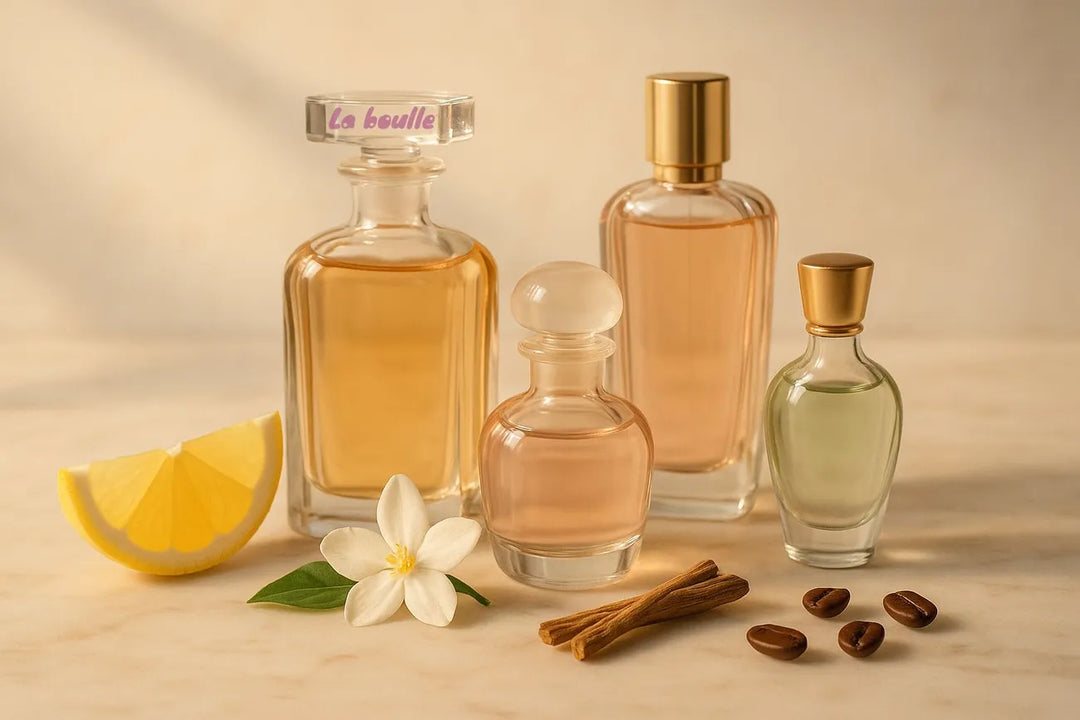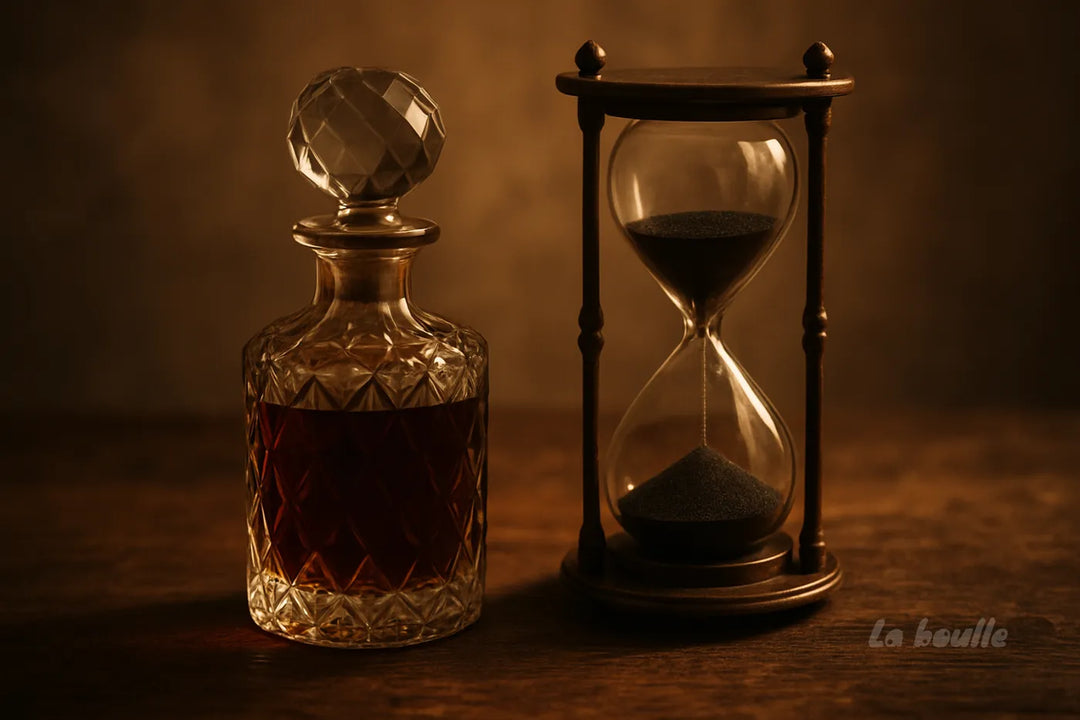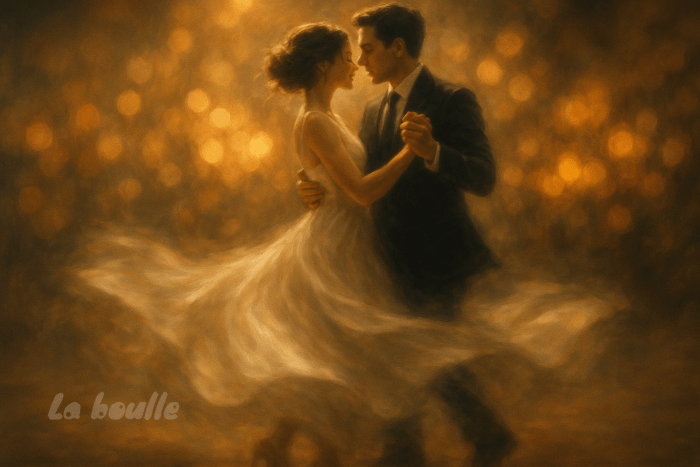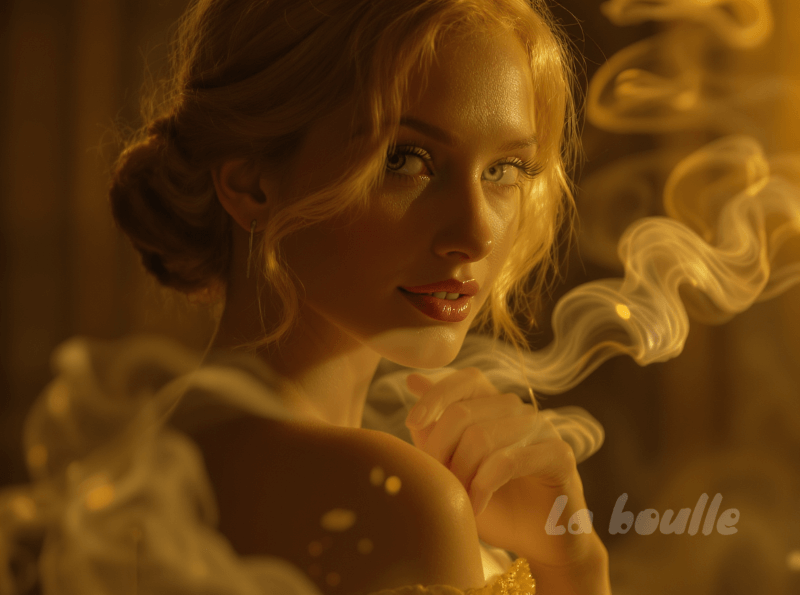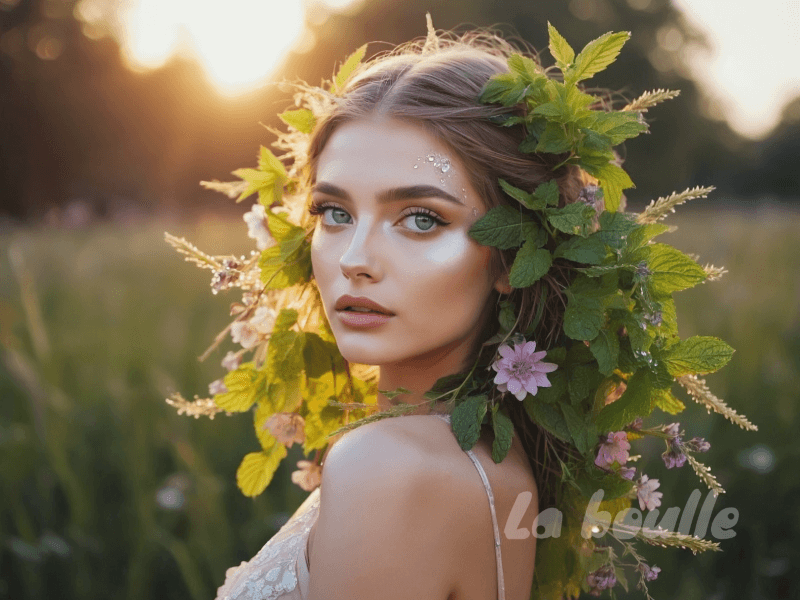The Complete Guide to Perfume Types: Understanding Fragrance Strength, Scents & Formats

Choosing a fragrance can feel overwhelming when you're faced with terms like "Eau de Parfum," "Eau de Toilette," and "Extrait." What do these labels actually mean? And why does it matter?
Understanding perfume types isn't just about decoding fancy French words, it's about finding scents that suit your lifestyle, your skin, and the moments you want to mark with fragrance. When we talk about perfume types, we're usually referring to one of four things: fragrance strength (concentration), scent family (the olfactory category), format (spray, solid, oil), or even the era a perfume represents (think bold 80s orientals versus minimalist modern fragrances).
This guide will walk you through each dimension of understanding perfume types, so you can shop smarter, wear what you love, and never waste money on a bottle that doesn't suit you.
SUMMARY
- What are perfume types?
- The five types of perfume by strength
- Perfume vs Eau de parfum vs Eau de toilette
- The most loved scent families explained
- A brief history of perfume by era
- Solid, Oil and Spray
- How to choose the right perfume type for you
- The power of knowing what you’re wearing
What Are Perfume Types?
Before we dive into specifics, let's clarify what "perfume type" actually encompasses.
The term can mean different things depending on context:
● Fragrance strength: How concentrated the perfume oils are (e.g., Eau de Parfum vs Eau de Toilette)
● Scent family: The dominant olfactory character (floral, woody, citrus, etc.)
● Format: How the fragrance is delivered (spray, solid balm, roll-on oil)
● Era or style: The aesthetic or time period a fragrance evokes (vintage 80s powerhouses, fresh 90s aquatics, intimate modern niche scents)
You can study all four angles here, giving you a complete picture of how to navigate the world of fragrance with confidence.
The Five Main Types of Perfume by Strength
One of the most important distinctions when shopping for fragrance is concentration. The types of perfume strength determine how long a scent lasts, how strong it projects, and even how much you'll pay.
Here's a breakdown from strongest to lightest:
1. Perfume Extract / Parfum (Extrait de Parfum)
Concentration: 20–40% fragrance oils
Longevity: 8–12+ hours
Character: Rich, deep, and long-lasting
This is the purest and most potent form of fragrance. Parfum sits close to the skin and evolves beautifully throughout the day. It's ideal for special occasions or when you want a scent that lasts without reapplication.
2. Eau de Parfum (EDP)
Concentration: 15–20% fragrance oils
Longevity: 6–8 hours
Character: Bold yet wearable
Eau de Parfum strikes a balance between intensity and accessibility. It's the most popular concentration for everyday wear, offering strong sillage (the trail your scent leaves) without being overpowering. If you're wondering is Eau de Parfum stronger than Parfum, the answer is no: Parfum (Extrait) is always stronger.
3. Eau de Toilette (EDT)
Concentration: 5–15% fragrance oils
Longevity: 3–5 hours
Character: Fresh, light, and uplifting
EDT is perfect for daytime, warmer weather, or professional settings. It's less intense and typically more affordable. Many wonder about the perfume or Eau de Toilette difference, but it's all about concentration and staying power.
4. Eau de Cologne (EDC)
Concentration: 2–5% fragrance oils
Longevity: 2–3 hours
Character: Crisp and refreshing
Originally a citrus-based splash from Cologne, Germany, this format is light and invigorating. It's ideal for post-shower freshness or a midday pick-me-up.
5. Eau Fraîche
Concentration: 1–3% fragrance oils
Longevity: 1–2 hours
Character: Barely-there freshness
The lightest option, often with a high water content. Think body mists or aftershave splashes - more about refreshment than lasting scent.
Tip: How Long Does Each Type Last on Skin?
|
Type |
Longevity |
|
Parfum |
8–12+ hours |
|
Eau de Parfum |
6–8 hours |
|
Eau de Toilette |
3–5 hours |
|
Eau de Cologne |
2–3 hours |
|
Eau Fraîche |
1–2 hours |
Remember: longevity also depends on your skin type, climate, and the specific ingredients in the fragrance.
Perfume vs Eau de Parfum vs Eau de Toilette: What's the Real Difference?
This is where confusion peaks. Customers often ask: what's the difference between perfume and Eau de Toilette? Or perfume versus Eau de Parfum - aren't they the same thing?
Let's clear it up with a simple comparison:
|
TYPE |
CONCENTRATION |
LONGEVITY |
PRICE POINT |
IDEAL USE |
|
Parfum (Extrait) |
20–40% |
8–12+ hours |
Highest |
Evening, special occasions, cold weather |
|
Eau de Parfum |
15–20% |
6–8 hours |
Mid-to-high |
Everyday wear, dates, work (if office-friendly) |
|
Eau de Toilette |
5–15% |
3–5 hours |
Mid |
Daytime, warm weather, active days |
Choosing Based on Emotion and Setting
Fragrance isn't just chemistry, it's memory, mood, and proximity.
● Parfum is for moments you want to savour. It stays close and whispers rather than shouts. Perfect for intimate settings or when you want to feel luxurious.
● Eau de Parfum is your confident everyday signature. It announces your presence without overwhelming a room.
● Eau de Toilette is for ease and lightness. It suits busy mornings, hot summer afternoons, or when you want to smell fresh without being "perfumed."
When deciding between perfume or Eau de Toilette, ask yourself: do I want to be noticed, or do I want to feel quietly elegant?
The Most Loved Scent Families Explained

Now that we've covered strength, let's talk about the types of perfume scents, the olfactory families that shape how a fragrance smells and feels.
Understanding fragrance types of perfume helps you identify what you're drawn to and communicate your preferences when shopping.
1. Floral
Character: Feminine, soft, romantic
Notes: Rose, jasmine, peony, violet, tuberose
The most popular family in perfumery. Florals can range from fresh and dewy to rich and intoxicating. They're timeless and versatile.
2. Citrus
Character: Fresh, bright, energising
Notes: Lemon, bergamot, orange, grapefruit, lime
Citrus scents are crisp and uplifting. They're often used in Eau de Colognes and are perfect for daytime or warmer months.
3. Woody
Character: Earthy, grounding, sophisticated
Notes: Sandalwood, cedar, vetiver, patchouli
Woody fragrances evoke forests, libraries, and quiet confidence. They're often unisex and deeply comforting.
4. Oriental / Amber
Character: Warm, spicy, sensual
Notes: Vanilla, amber, cinnamon, incense, resins
Rich and enveloping, oriental scents are often associated with evening wear and colder weather. They have a vintage glamour about them.
5. Aquatic
Character: Clean, breezy, marine
Notes: Sea salt, water lily, cucumber, ozone
Aquatics rose to fame in the 90s. They smell fresh and airy—like a sea breeze or freshly laundered linen.
6. Gourmand
Character: Sweet, edible, indulgent
Notes: Caramel, chocolate, coffee, almond, honey
Gourmands smell good enough to eat. They're playful, cosy, and often polarising—you either love them or find them too sweet.
7. Green
Character: Crisp, herbal, natural
Notes: Grass, basil, mint, fig, lemongrass
Green fragrances evoke gardens and countryside. They're fresh but more complex than simple citrus.
8. Fruity
Character: Playful, juicy, youthful
Notes: Peach, apple, blackcurrant, pear, berry
Fruity scents are cheerful and approachable. They often blend with florals to create modern, wearable compositions.
🌿 Bonus: Solid perfume formats often blend multiple scent families in unique, layered ways. Because they're wax-based and sit close to the skin, the evolution can feel more intimate and personal than traditional sprays.
A Brief History of Perfume by Era: 80s, 90s, Now
Fragrance trends shift with culture, fashion, and technology. Understanding the perfume 80s aesthetic or the signature scents of perfumes 1990s can help you place a fragrance in context and decide if it's for you.
The 1980s: Big, Bold, and Unapologetic
The 80s were all about power and presence. Fragrances were loud, opulent, and designed to announce your arrival. Think heavy orientals, animalic musks, big white florals, and generous doses of oakmoss and patchouli.
Iconic examples: Opium, Poison, Giorgio Beverly Hills
These scents projected across rooms and lasted all day. They were glamorous, but often synthetic-heavy by today's standards.
The 1990s: Fresh, Clean, and Minimalist
In reaction to the 80s, the 90s brought a wave of aquatic, ozonic, and fresh florals. Perfumes became lighter, cleaner, and more "office-friendly." Calvin Klein's CK One epitomised the unisex, minimalist vibe of the decade.
Iconic examples: CK One, L'Eau d'Issey, Acqua di Gio
These scents felt modern and effortless, but some critics found them a bit sterile or overly synthetic.
Now: Intimate, Artisanal, and Personal
Today's perfume landscape celebrates diversity. Niche and indie brands have flourished, offering smaller batches, natural ingredients, and scents that prioritise intimacy over projection. Modern perfume lovers want something that feels personal—not mass-produced.
This is where brands like La Boulle come in: thoughtfully crafted, close-to-skin fragrances that feel like a secret rather than a statement. They're the antidote to synthetic-heavy formulas and generic department store offerings.
Solid, Oil, and Spray: The Formats That Shape Your Experience
We've covered strength and scent, but format matters too. The different types of perfume delivery methods affect how a fragrance wears, projects, and fits into your daily routine.
Spray (Atomiser)
Pros: Strong projection, even distribution, traditional and familiar
Cons: Can be wasteful, alcohol can dry skin, less travel-friendly
Sprays are the classic choice. They create a cloud of scent that settles on skin and clothes, giving maximum sillage.
Roll-On Oil
Pros: Intimate, gentle on sensitive skin, portable, no alcohol
Cons: Less projection, can feel greasy, harder to layer
Oil-based perfumes are concentrated and stay close to the skin. They're ideal for those who want a personal scent bubble rather than a trail.
Solid Balm
Pros: Ultra-portable, moisturising, long-lasting, no spill risk, TSA-friendly
Cons: Requires finger application, less projection than spray
Solid perfumes are having a renaissance. They're perfect for touch-ups, travel, and layering. Because they melt into the warmth of your skin, they feel tactile and personal.
Explore La Boulle's curated collection of solid perfumes, crafted to stay close and evolve beautifully throughout your day.
How to Choose the Right Perfume Type for You
With so many options, how do you decide? Here's practical guidance tailored to different needs.
For the Clear Head Shopper
Start with these questions:
- How long do I need it to last? → Choose concentration accordingly
- Where will I wear it? → Office = lighter; evening = richer
- What's my budget? → EDT and solid formats are more affordable
- Do I have sensitive skin? → Avoid high-alcohol sprays; try oils or solids
Quick decision tree:
Everyday + budget-conscious = Eau de Toilette
Special occasions + willing to invest = Parfum or Eau de Parfum
Travel + convenience = Solid perfume
For the Involved Explorer
Start with these reflections:
- How do I want to feel? → Confident? Calm? Playful? Sensual?
- What memories do I want to evoke? → Florals for romance, woods for grounding
- How close do I want my scent to be? → Intimate = solid or oil; expansive = spray
- What's my intention? → A scent for focus, comfort, or celebration?
Intuitive guide:
If you want to feel held and cosy → Gourmand or woody
If you want to feel fresh and light → Citrus or aquatic
If you want to feel romantic → Floral
If you want to feel bold → Oriental
Universal Advice
Try before you commit. Perfume smells different on paper, in the bottle, and on your skin. Let it live with you for a few hours before deciding. If possible, start with a sample or a smaller format like a solid balm.
Don't rush. Let the fragrance tell its story on your skin before you commit to a full bottle.
Conclusion: The Power of Knowing What You're Wearing
Understanding perfume types, whether it's concentration, scent family, format, or era, gives you clarity, confidence, and joy. You stop buying blindly and start choosing fragrances that truly suit your life.
Knowing the difference between perfume and Eau de Toilette, or recognising that you're drawn to woody scents over florals, transforms fragrance from a confusing luxury into a personal ritual.
Final thought: Choose what feels like you, not just what smells nice in the shop. Fragrance is intimate. It should reflect who you are, not who you think you should be.
Explore La Boulle's curated collection: perfumes made to stay close, crafted with care, and designed for those who value quality over quantity.
Frequently Asked Questions
Do perfumes expire over time?
Yes. Most perfumes last 3–5 years depending on the ingredients and how they're stored. Natural ingredients may degrade faster than synthetics. To extend shelf life, store your perfume in a cool, dark place away from direct sunlight and heat.
Is Eau de Parfum stronger than Parfum?
No. Parfum (also called Extrait de Parfum) is the strongest concentration, typically containing 20–40% fragrance oils. Eau de Parfum contains 15–20%, making it lighter and more affordable, but still long-lasting.
What's the difference between perfume and Eau de Toilette?
The main difference is concentration. "Perfume" (Parfum) has the highest concentration of fragrance oils (20–40%) and lasts the longest. Eau de Toilette is lighter (5–15% concentration) and fades faster, usually within 3–5 hours. EDT is ideal for daytime or casual wear, while Parfum suits special occasions.
Are solid perfumes weaker than sprays?
Not necessarily. Solid perfumes are more intimate—they project less but can have excellent longevity because the wax or balm base releases fragrance slowly as it warms on your skin. They're perfect for close-to-skin wear and won't fill a room, but they're not "weaker" in terms of staying power.
How do I know which perfume type is best for me?
Think about three things: strength (how long you need it to last), season (lighter in summer, richer in winter), and proximity (do you want people to smell you from across the room, or only when they're close?). Start with samples or smaller formats like solid perfumes to test before committing to a full bottle.
Dorin Epureanu, Perfumer La Boulle



